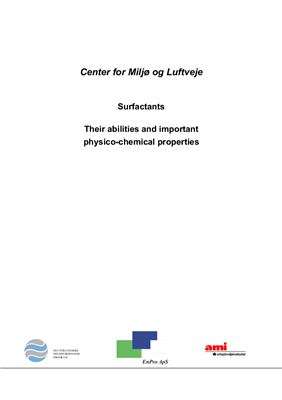Rapport fra Center for Milj? og Luftveje. Arbejdsmilj?instituttet,
K?benhavn 2002. - 54 p. (English).
Surfactants are described in general terms by discussion of chemical structure, types and abilities. The four different main types of surfactants: anionic, cationic, non-ionic and amphoteric surfactants are shortly presented and examples of compounds belonging to each type are listed.
The most important technical abilities of surfactants and surfactant solutions like emulsification, solubility, wetting, dispersing, foaming and detergency are discussed and these abilities are related to relevant physico-chemical properties. The most important physico-chemical properties are described as well as their usefulness from a technical point of view when working with formulations containing surfactants. Appendix A lists properties commonly available for some selected non-ionic and anionic surfactants (ethoxylated alcohols and alkyl sulphates respectively).
Surfactants are described in general terms by discussion of chemical structure, types and abilities. The four different main types of surfactants: anionic, cationic, non-ionic and amphoteric surfactants are shortly presented and examples of compounds belonging to each type are listed.
The most important technical abilities of surfactants and surfactant solutions like emulsification, solubility, wetting, dispersing, foaming and detergency are discussed and these abilities are related to relevant physico-chemical properties. The most important physico-chemical properties are described as well as their usefulness from a technical point of view when working with formulations containing surfactants. Appendix A lists properties commonly available for some selected non-ionic and anionic surfactants (ethoxylated alcohols and alkyl sulphates respectively).

